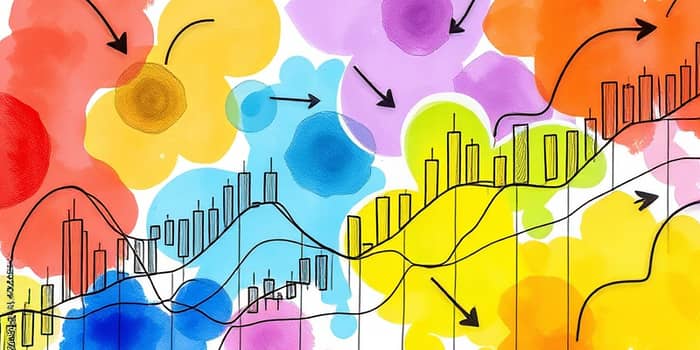
In today’s complex financial landscape, mastering market metrics is essential for success. Among these metrics, volume and volatility stand out as foundational measures that inform decision-making, risk assessment, and strategic planning.
This article dives deep into the definitions, methodologies, and practical applications of volume and volatility, offering traders, investors, and analysts actionable insights and real-world examples.
Volatility measures the degree of variation in a security’s returns over time. It quantifies how much and how quickly prices move, serving as a key indicator of market risk and uncertainty.
High volatility signals rapid price shifts, while low volatility suggests steadier movement. Volatility can manifest as upward or downward swings rather than only declines, making it a versatile gauge of market sentiment.
Accurate measurement is critical for effective market analysis. Common quantitative approaches include:
Typical benchmarks regard a 1% daily move as significant, and annualized volatility percentages often guide risk models and derivative pricing.
Volume represents the total number of shares or contracts traded in a market over a specific period. It serves as a barometer of market interest and conviction.
High trading volume often confirms price movements, while low volume may indicate hesitancy or lack of participation.
Volume and volatility often move in tandem. Sharp price swings tend to attract increased trading activity, while surges in volume can fuel greater price movement.
Major catalysts like corporate earnings announcements, economic data releases, or geopolitical events typically trigger spikes in both metrics. Understanding their interplay can guide traders toward timely entry and exit points and help risk managers adjust positions dynamically.
Volume and volatility metrics play central roles in various analytical frameworks and trading strategies.
Consider a stock with a 20-day historical volatility of 15%. This indicates that the annualized standard deviation of its daily returns is 15%, guiding risk parameters and capital allocation.
During the 2008 financial crisis, major indices saw daily moves exceeding 2%, with corresponding volume surges as investors reacted to market stress. Similarly, the onset of the COVID-19 pandemic in early 2020 produced unprecedented volatility spikes alongside record volume levels.
By calculating daily returns and applying standard deviation formulas, analysts can backtest strategies and refine entry criteria. Integrating GARCH models further enhances forecasts, particularly when markets exhibit clustering of high-volatility periods.
While invaluable, volume and volatility are not foolproof. Historical measures offer no guarantee of future behavior, and volume figures can be misleading in low-float or highly speculative stocks.
Complementary metrics can enrich analysis:
Volume and volatility remain indispensable in advanced market analysis, offering a window into market psychology, risk dynamics, and opportunity identification.
By mastering measurement techniques, integrating robust models, and applying these metrics alongside complementary indicators, traders and investors can navigate uncertain markets with greater confidence and precision.
Ultimately, understanding the intricate dance between how much is traded and how wildly prices move empowers market participants to make more informed, strategic decisions.
References













